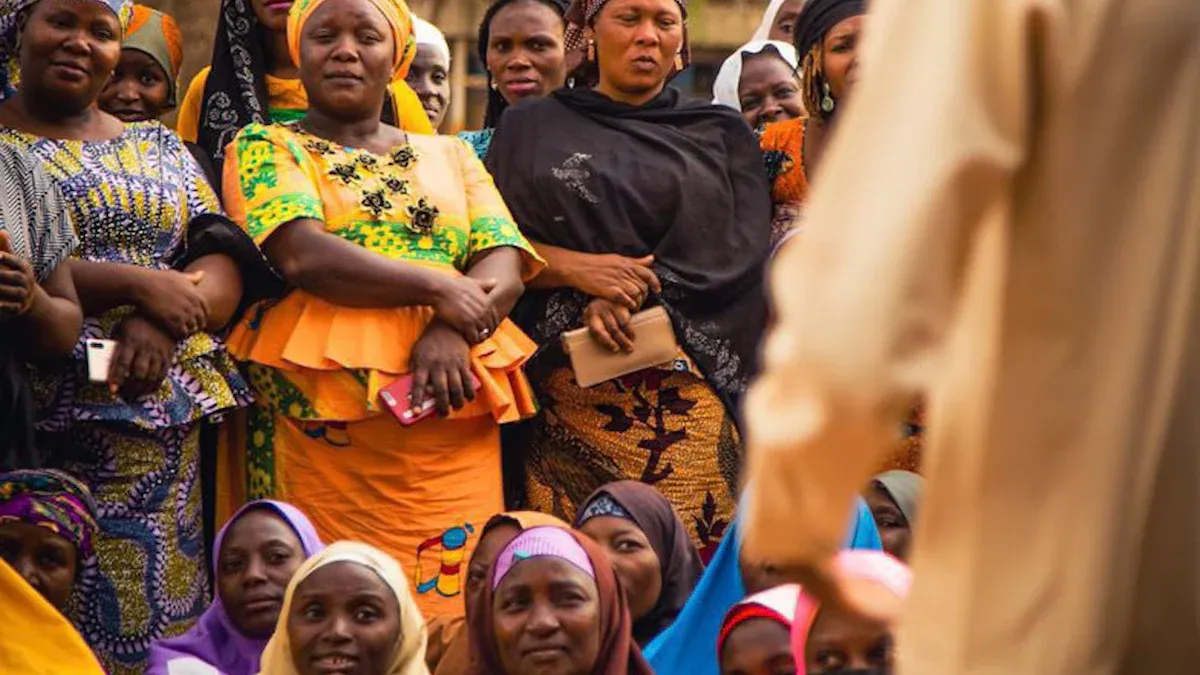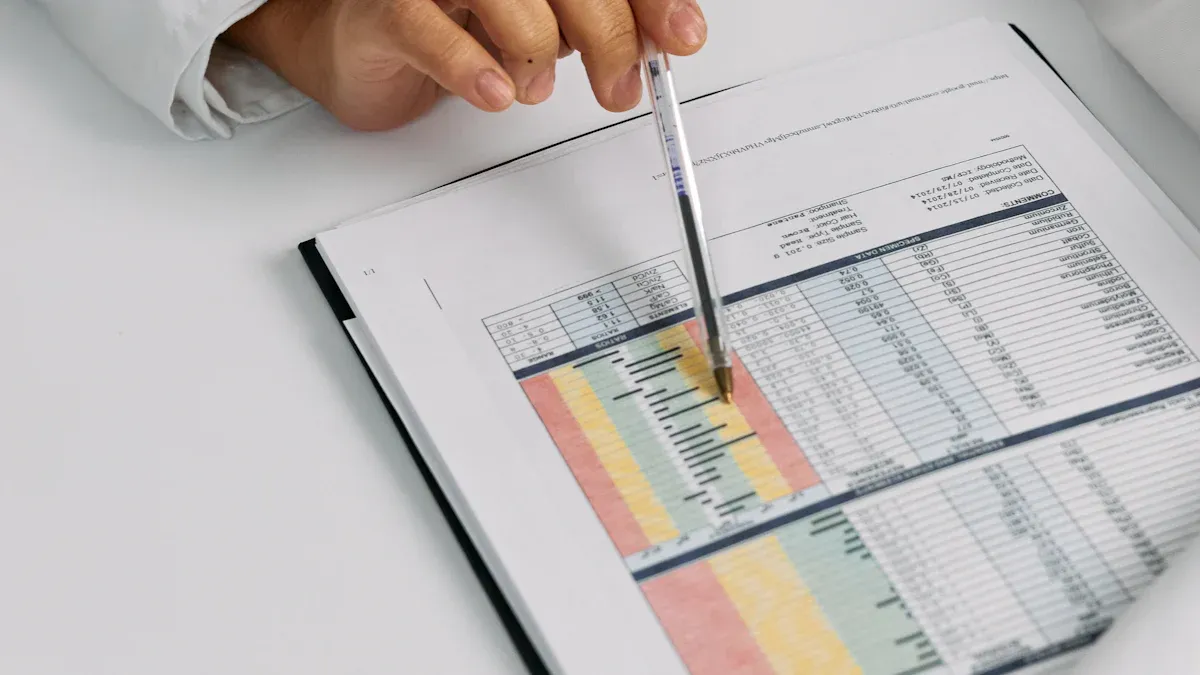How to Measure Community Engagement in Cancer Initiatives Effectively

How to Measure Community Engagement and Impact in Cancer Initiatives requires a balanced approach. Quantitative methods track measurable outcomes like increased cancer screening and healthy behaviors. Qualitative methods explore community experiences through interviews, observations, and document reviews.
Quantitative data shows if projects meet goals.
Qualitative data reveals how people feel about engagement and what happens during activities.
Combining both methods gives a deeper, more accurate picture of community engagement.
Key Takeaways
Measuring community engagement helps cancer programs meet goals, build trust, and reduce health disparities.
Using both numbers and stories gives a full picture of how well cancer initiatives connect with communities.
Validated tools and clear plans make measuring engagement accurate and meaningful.
Including community voices and feedback keeps programs relevant and respectful.
Overcoming barriers like language and access improves participation and strengthens partnerships.
Why Measure Engagement

Program Success
Measuring community engagement helps cancer programs reach their goals. When teams track engagement, they can see if their efforts match the needs of the people they serve. Programs that measure engagement often build stronger partnerships. These partnerships help everyone work together and share ideas.
Teams can check if people feel respected and valued during projects.
Feedback from partners helps improve how programs run, even when challenges arise.
High participation in meetings and research shows that people want to stay involved.
Tracking engagement helps programs adjust and become more effective over time.
Programs that measure engagement often see better results. They can show that their work makes a real difference in cancer prevention and care.
Reducing Disparities
Cancer does not affect all groups equally. Some communities face more barriers to care and worse outcomes. Measuring engagement helps teams find and fix these gaps.
Programs use tools to track who joins screenings and who gets care.
Patient navigators and local outreach help more people get the services they need.
Community partnerships help identify barriers, like transportation or cost, and create solutions.
Tracking engagement helps programs reach people who might otherwise be left out.
When teams measure engagement, they can design better interventions. These efforts help reduce differences in cancer outcomes between groups.
Community Trust
Trust is key in any health initiative. Many communities have faced discrimination or have reasons to mistrust health systems. Tracking engagement builds trust by showing that programs listen and respond to real needs.
When teams involve local leaders and organizations, they create honest and open communication.
Programs that track engagement can address misinformation and show respect for community voices. This approach leads to stronger, lasting relationships.
Building trust through engagement helps programs succeed and ensures that everyone benefits from cancer research and care.
How to Measure Community Engagement and Impact in Cancer Initiatives
Quantitative Metrics
Quantitative metrics help teams track progress in cancer initiatives using numbers and data. These measures show how well programs reach their goals and where they can improve. Teams often use surveys, attendance records, and demographic data to collect this information.
Self-reported changes in knowledge and confidence, measured with 5-point Likert scales, help teams see if participants learn new information.
Attendance rates and the number of sessions conducted show how many people take part in activities.
Survey response rates indicate how engaged participants feel.
Demographic data, such as years of professional experience, help teams understand who joins the program.
Pre- and post-program surveys compare knowledge and confidence before and after the initiative.
Aggregated participant counts and session averages across programs reveal trends over time.
The Program for the Elimination of Cancer Disparities (PECaD) at the Siteman Cancer Center developed a comprehensive survey to measure engagement. This survey evaluates adherence to 11 Engagement Principles, such as local relevance, community acknowledgment, and equitable partnerships. It uses a 96-item survey, administered twice a year, to capture both the quality and quantity of engagement activities. The survey uses Likert scales to rate frequency and quality, making it easier to compare results across different groups and programs.
Quantitative metrics provide clear, objective data that help teams understand the impact of their efforts and identify areas for growth.
Qualitative Metrics
Qualitative metrics capture the stories, feelings, and experiences of community members. These measures help teams understand the deeper impact of cancer initiatives beyond numbers. Teams often use interviews, focus groups, and open-ended survey questions to gather this information.
Community feedback reveals what people like or dislike about the program.
The depth of relationships shows how well teams and community members work together.
Long-term connections highlight the trust and commitment built over time.
Observations during meetings or events provide insight into group dynamics and participation.
Document reviews, such as meeting notes or partnership agreements, help teams track progress and changes.
Qualitative data helps teams learn why people join or leave programs, what barriers they face, and how they feel about their involvement. This information guides teams in making changes that better meet community needs. By combining qualitative and quantitative metrics, teams gain a complete picture of how to measure community engagement and impact in cancer initiatives.
Listening to community voices ensures that programs remain relevant and respectful, building stronger partnerships for the future.
Validated Tools
Validated tools give teams reliable ways to measure engagement in cancer initiatives. These tools use tested questions and methods to ensure accurate results. The Community Engagement Measure, used at the Siteman Cancer Center, assesses engagement across 11 focus areas based on community-engaged research principles. This tool uses a 48-item Likert scale to evaluate both the quality and quantity of engagement. Developed with input from a diverse community advisory committee, it helps teams monitor and improve community-academic partnerships.
Another widely used tool is the Research Engagement Survey Tool (REST). REST was developed and tested within PECaD and is designed to assess stakeholder engagement from the perspective of non-academic research partners. REST shows high reliability and validity, making it a trusted choice for measuring engagement in cancer-related programs. It aligns with 11 engagement principles and was created with extensive community input.
Teams also use logic models and the ATSDR Community Activities Survey to track activities and outcomes. These tools help teams align their measurement with engagement principles and organizational goals. By using validated tools, teams ensure that their data is accurate and meaningful.
Choosing the right tools helps teams measure what matters most and supports ongoing improvement in cancer initiatives.
How to measure community engagement and impact in cancer initiatives depends on using both numbers and stories. Teams that use quantitative and qualitative metrics, along with validated tools, can track progress, build trust, and create lasting change.
Measurement Steps
Set Objectives
Setting clear objectives forms the foundation for measuring community engagement in cancer initiatives. Teams start by learning about the community’s unique needs and health concerns. They gather information through online research and by talking with local leaders. Early communication about the project’s goals builds trust and sets expectations. Teams use worksheets to identify partners and possible barriers. They develop detailed engagement plans with timelines, budgets, and activities. Including patient and community input at every stage ensures that objectives match real needs. Teams select key performance indicators (KPIs) such as participation rates and demographic diversity to track progress.
Tip: Using engagement rubrics and assessment tools helps teams refine their approach and plan for sharing results in clear, respectful language.
Design Tools
Teams design data collection tools that fit the community’s context. They often form advisory boards or councils to guide the process. Community members help choose survey questions and interview topics. Training local residents to collect data builds trust and ensures cultural relevance. Teams use a mix of surveys, interviews, and focus groups to gather both numbers and stories. They apply rapid assessment methods to keep projects moving and adjust tools as needed. Inclusivity remains a top priority, so teams use plain language and culturally sensitive materials.
Collect Data
Reliable data collection depends on strong partnerships and clear communication. Teams work with community organizations to reach a wide audience. They use technology, such as electronic health records and data dashboards, to gather information efficiently. Privacy and transparency matter, so teams explain how data will be used and protect participant information. Collecting data from large, diverse groups ensures results reflect the whole community. Teams also share updates and invite feedback throughout the process.
Analyze Results
Teams analyze quantitative data using statistical methods like logistic regression and data visualization tools. They look for patterns in participation, knowledge gains, and behavior changes. For qualitative data, teams read through notes and interviews, searching for common themes and unique insights. They review and refine these themes, then share findings with the community for feedback. This approach helps teams turn data into action, guiding future improvements and supporting the goals of How to Measure Community Engagement and Impact in Cancer Initiatives.
Data Analysis

Quantitative Insights
Quantitative analysis gives teams a clear view of community engagement in cancer programs. Teams often use numbers to measure cancer burden and track progress. Common quantitative insights include:
Cancer incidence and mortality rates across different groups
Disparities in social determinants of health, such as income or education
Geographic patterns at state, county, or census tract levels
Over 100 variables, including economic and social factors, that affect cancer outcomes
Visualizations like charts, tables, and maps to highlight trends and set priorities
These data points help teams identify where gaps exist and which communities need more support. Quantitative analysis also allows teams to compare results over time and across regions.
Qualitative Insights
Qualitative analysis uncovers the stories and experiences behind the numbers. Teams use interviews, focus groups, and observations to learn about barriers and successes in cancer initiatives. For example, interviews with Black women who delayed breast cancer care revealed how poverty, unemployment, and stress shape health decisions. Community connectors share trusted perspectives, helping teams understand readiness and barriers to engagement. Volunteers and steering group members often highlight the importance of cultural and language skills in reaching vulnerable groups. Qualitative insights show that community-led, culturally tailored interventions build trust and improve outreach. These methods reveal why some strategies work better than others and guide teams in making meaningful changes.
Linking to Outcomes
Teams link engagement metrics to cancer initiative outcomes by connecting activities to real-world results. They use several methods:
Providing cultural sensitivity training for staff
Hiring bilingual or bicultural navigators
Creating targeted campaigns with community input
Building advisory committees for ongoing feedback
Sharing cancer burden data with partners
Educating communities in their preferred languages
Partnering with local health centers and using social media for outreach
Component | Description / Examples |
|---|---|
Inputs | Staff, mobile clinics, patient navigators |
Aims | Assess needs, build partnerships, promote advocacy |
Activities | Outreach, navigation, community training |
More screenings, higher vaccination rates, greater trust | |
Long-term Outcomes | Lower cancer disparities, reduced mortality, fewer late-stage diagnoses |
Challenges | Data gaps, aligning goals with outcomes, maintaining community trust |
By analyzing both quantitative and qualitative data, teams can see how engagement activities lead to better cancer outcomes and stronger community relationships.
Best Practices
Inclusivity
Inclusive cancer initiatives build trust and foster meaningful engagement. Teams establish credibility by practicing open, two-way communication and sharing research results with participants. They recognize past breaches of trust in clinical research and work to address them. Community partners serve as full collaborators, sharing resources and decision-making power. Teams measure trustworthiness over time to ensure engagement remains effective.
Community advisory boards and focus groups involve local voices in planning and reviewing materials.
Engagement strategies adapt to each community’s needs, as seen in programs like the FAMiLI study with Asian American groups.
Workforce diversity reflects the community served, improving trust and communication.
Community health worker models and peer educator programs empower underserved populations.
Policy changes in recruitment and outreach increase diversity among staff and link DEI efforts to health outcomes.
Partnerships with local organizations, needs assessments, and culturally sensitive outreach strengthen inclusivity.
Technology, such as social media and telehealth, expands access and engagement.
Teams track inclusivity by monitoring participation, conducting satisfaction surveys, and analyzing outcomes. Continuous data use helps improve and sustain outreach.
Continuous Feedback
Continuous feedback ensures cancer programs stay responsive and effective. Programs like Making Research CLEAR use regular research experiences, monthly debriefings, and participation in cancer center activities to gather ongoing input. Both community members and investigators complete surveys at the start and end, measuring awareness, trust, and intentions. Open-ended questions collect valuable qualitative feedback.
Teams use feedback to refine programs, such as extending timelines or improving training materials.
Bi-directional engagement builds trust and understanding, measured through changes in attitudes and intentions.
Matching community members with investigators based on interests or language personalizes engagement.
Iterative evaluation combines quantitative and qualitative insights for continuous improvement.
Regular feedback helps teams adjust quickly, ensuring programs remain relevant and effective.
Overcoming Barriers
Cancer initiatives face many barriers to measuring engagement. Restrictive eligibility criteria, clinician time constraints, and negative perceptions can limit participation. Community care centers may struggle with limited staff, lack of awareness, and transportation issues. Language differences and scheduling challenges also create obstacles.
Teams address these barriers by building strong research infrastructure and using navigation platforms to improve referrals.
Bilingual services, multiple communication channels, and community health workers help overcome language gaps.
Extended clinic hours, childcare, and ride-share systems make participation easier.
Mapping tools visualize barriers and guide collaboration.
Funding from sources like the Prevention and Public Health Fund supports community organizations.
Engaging policy stakeholders and strengthening community capacity through education and support improves measurement and impact.
By identifying and addressing barriers, teams create more equitable and effective cancer engagement initiatives.
Measuring community engagement in cancer initiatives requires clear steps and thoughtful strategies. Teams benefit from:
Immersive experiences and open communication between researchers and community members, which build trust and improve understanding.
Culturally sensitive approaches, such as bilingual materials and family-friendly sessions, that reduce barriers and support participation.
Combining quantitative and qualitative methods, which helps teams see both the numbers and the stories behind engagement.
Expert Recommendation | Description |
|---|---|
Diverse boards guide planning and ensure broad representation. | |
Iterative Feedback | Ongoing discussions and surveys improve satisfaction and role clarity. |
Focus on Social Determinants | Addressing disparities leads to more equitable cancer control. |
Teams that apply these strategies create stronger partnerships and achieve better outcomes for their communities.
FAQ
How can teams choose the right engagement metrics?
Teams select metrics that match their program goals. They review both quantitative data, like attendance, and qualitative feedback, such as community stories. Teams often consult advisory boards to ensure the chosen metrics reflect community needs.
What tools help measure community engagement in cancer initiatives?
Validated tools, such as the Community Engagement Measure (CEM) and the Research Engagement Survey Tool (REST), provide reliable results. Teams also use logic models and community surveys to track progress and outcomes.
Why is community feedback important in cancer programs?
Community feedback helps teams understand what works and what needs improvement. It builds trust and ensures programs stay relevant. Teams use interviews, focus groups, and surveys to gather this feedback.
How do teams address barriers to engagement?
Teams identify barriers by talking with community members. They offer solutions like bilingual materials, flexible meeting times, and transportation support. These steps make participation easier for everyone.
Can technology improve community engagement measurement?
Yes. Teams use electronic health records, online surveys, and data dashboards to collect and analyze information. Technology helps reach more people and makes data collection faster and more accurate.
See Also
Identifying Symptoms And Facts About Inflammatory Breast Cancer
An In-Depth Overview Of Various Cancer Types Today
Exploring Cholangiocarcinoma And Its Main Features Explained
Recognizing Signs And Root Causes Of Anal Cancer
A Guide To Symptoms And Treatment Options For Conjunctival Melanoma
